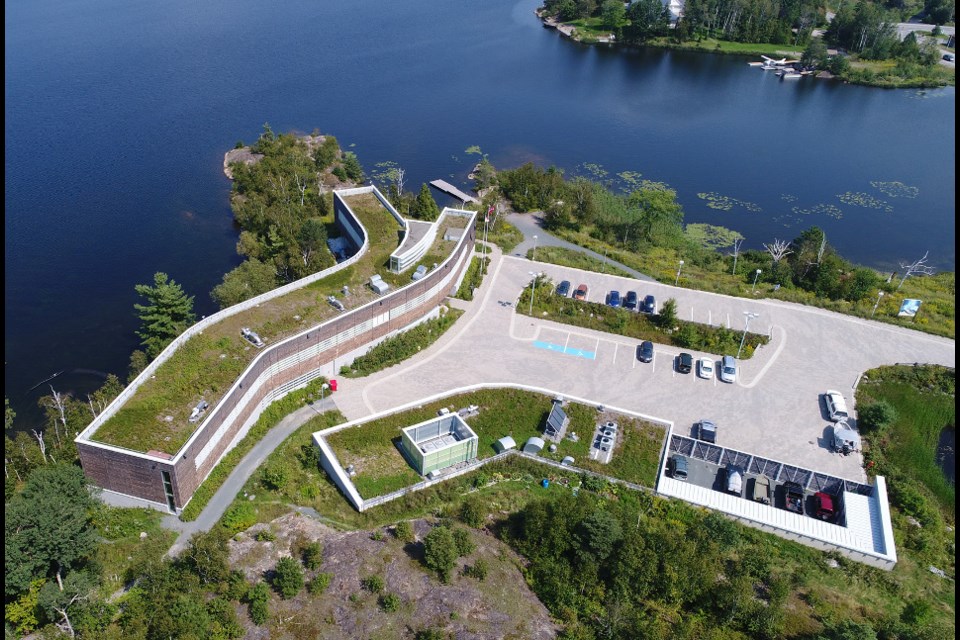Four decades ago, countries around the world were using the word ‘Sudbury’ as a unit of pollution.
The city was the single largest point source of sulfur dioxide emissions in the 1960s, producing about 2.5 million tonnes per year.
According to John Gunn, director of the Vale Living With Lakes Centre at Laurentian University, that’s bigger than all of Europe today.
“Countries were saying, how many Sudburys do you produce?” said Gunn. “And the answer to that question wasn’t one. It was less than one.”
Air quality, however, was the tip of the iceberg.
The region had been reduced to a barren wasteland (often referred to as a moonscape) after only a few decades of mining and smelting.
Local vegetation was devastated by acid rain and logging, as Sudbury earned a reputation of being one of the most infamous disasters in North America.
The before photos are damning: the black rock landscape littered with tree stumps was a scene out of a post-apocalyptic future.
In the summer of 1978, the city initiated one of the largest land reclamation efforts in the world.
Public pressure forced the government to introduce pollution control legislation to address widespread concern about air quality, and later, in the 1980s, acid rain.
The mining industry was entering a period of prosperity when the abatement programs were established. Government and industry worked together to spend over $1 billion on emissions control, land reclamation, and research efforts over the last 40 years, although industry originally balked.
“The mining companies were able to meet the new regulations, even though they complained that they couldn’t do it,” said Gunn. “Every time they are forced to respond to good regulations, they made money. Nickel production was going up as air pollution was going down.”
Things snowballed from there.
It’s not enough to say that Sudbury’s regreening efforts were a result of effective partnerships.
Collective mobilization of industry, government, academic institutions, and the public was necessary to the city’s transformation.
Any child who grew up in Sudbury has a story about planting trees on the barren landscape.
One of the keys to the city’s success was the establishment of research centres, like Living With Lakes, that monitored and documented the progress being made.
The process has led to some significant discoveries.
For example, that a minimal approach to reclamation is sometimes best.
Instead of relying on an overly engineered approach to regreening, experts discovered that, with a little help, nature would restore itself faster than they predicted.
A case in point is the miraculous recovery of lake trout in some of the region’s acid-damaged lakes.
“I would have not thought that I would live long enough to see the fish recover at the rate they have,” said Gunn, who oversaw the reintroduction of cold water fish species into the environment.
It’s important to remember that the Sudbury region is still badly damaged. However, the Sudbury story is miraculous, to say the least.
The city once had about 7,000 acid-damaged lakes, and 80,000 hectares of almost-barren landscape.
From 1978 to 2017, over 3,400 hectares of land were limed and grassed over, and roughly 9.7 million trees have been planted.
In 1992, the City of Sudbury was awarded the UN Local Government Honors Award for its regreening efforts.
This year, the United Nations declared the next decade would be one of environmental restoration – and the world is coming in droves to learn from Sudbury’s experience.
“This thing here is our greatest accomplishment,” said Gunn. “We would do well to really sell what we’ve done here in terms of managing mining impacts and restoring damaged lands.”
Gunn also sees opportunities he hopes are considered in the future.
“Mine wastelands would be the perfect place for solar farms and wind farms,” he said. “We’ve gotta start to use the mining footprint as the workspace for solving the world’s problems.”
Because, in Gunn’s own words, published in a research paper, “it will do little good if the Sudbury area is cleaned up at great expense, but the rest of the world does not act in a similar manner.”
The Drift magazine features profiles on the people and companies making important contributions to the Northern Ontario mining service and supply sector. It is published annually and distributed at the Northern Ontario Mining Showcase during the Prospectors and Developers Association of Canada (PDAC) conference in Toronto.


